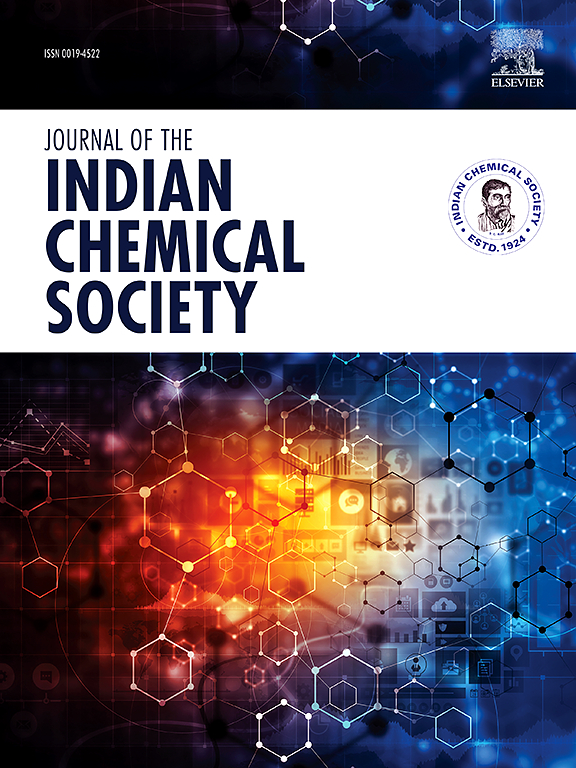A drug repurposing-based investigation of USFDA-approved anticancer drugs towards dipeptidyl-peptidase 4 (DPP4) receptor inhibition: An in silico and in vitro investigation to treat diabetes and associated conditions
IF 3.2
4区 化学
Q2 CHEMISTRY, MULTIDISCIPLINARY
引用次数: 0
Abstract
Dipeptidyl-peptidase 4 (DPP4) is a central molecular target that is known to be associated both with type 2 diabetes (T2DM) and cancer. The association of DPP4 in cancer is ever-expanding, with a plethora of evidence and clinical trials being instigated to find a plausible cure. The literature shows that DPP4 inhibitors could overcome the drug resistance associated with cancer chemotherapy, diminish the plausibility of secondary oncogenesis, activate the immune system against the cancer cells, and simultaneously halt cancer stemness. However, since drug discovery is a long, time-consuming, and costly affair, we limited ourselves to applying drug repositioning, which is an emerging thrust area of cost and time-effective drug discovery. We put the present research considering the benefit associated with incorporating DPP4 inhibitors in cancer regimens, or the patients suffering from cancer with high expression of DPP4, or considering the plausibility of diabetes prognosis to cancer. In the present work, we took 110 targeted anticancer agents approved by the US-FDA and filtered them through the developed pharmacophore model of DPP4. The top ligands resembling pharmacophores were further subjected to molecular docking and molecular mechanics experiments. The thorough analysis led us to identify five ligands with the highest affinity for the DPP4 receptor. The top-scoring ligand, palbociclib, was further subjected to molecular dynamics analysis, and its DPP4 inhibition was corroborated using an ELISA-based DPP4 assay on a MIN-6 cell line. The present work thus opens up the avenues to further explore the utility of the identified drug in depth using a plethora of in vitro and in vivo studies and delineate its molecular mechanisms.
美国fda批准的抗癌药物对二肽基肽酶4 (DPP4)受体抑制的药物再利用研究:一项治疗糖尿病及相关疾病的计算机和体外研究
二肽基肽酶4 (DPP4)是已知与2型糖尿病(T2DM)和癌症相关的中心分子靶点。DPP4与癌症的关系正在不断扩大,大量的证据和临床试验被鼓动起来寻找一种合理的治疗方法。文献表明,DPP4抑制剂可以克服与癌症化疗相关的耐药性,降低继发性肿瘤发生的可能性,激活针对癌细胞的免疫系统,同时阻止癌症的发生。然而,由于药物发现是一个漫长、耗时和昂贵的事情,我们将自己局限于应用药物重新定位,这是一个成本和时间有效的药物发现的新兴推力领域。我们将目前的研究考虑到在癌症治疗方案中加入DPP4抑制剂的益处,或患有高表达DPP4的癌症患者,或考虑糖尿病对癌症预后的合理性。本研究选取美国fda批准的110种靶向抗癌药物,通过建立的DPP4药效团模型进行筛选。进一步对类似药效载体的顶部配体进行分子对接和分子力学实验。通过深入的分析,我们确定了对DPP4受体具有最高亲和力的五个配体。得分最高的配体palbociclib进一步进行了分子动力学分析,并在MIN-6细胞系上使用基于elisa的DPP4检测证实了其抑制DPP4的作用。因此,目前的工作开辟了进一步探索的途径,利用大量的体外和体内的研究,深入鉴定药物的效用,并描绘其分子机制。
本文章由计算机程序翻译,如有差异,请以英文原文为准。
求助全文
约1分钟内获得全文
求助全文
来源期刊
CiteScore
3.50
自引率
7.70%
发文量
492
审稿时长
3-8 weeks
期刊介绍:
The Journal of the Indian Chemical Society publishes original, fundamental, theorical, experimental research work of highest quality in all areas of chemistry, biochemistry, medicinal chemistry, electrochemistry, agrochemistry, chemical engineering and technology, food chemistry, environmental chemistry, etc.

 求助内容:
求助内容: 应助结果提醒方式:
应助结果提醒方式:


